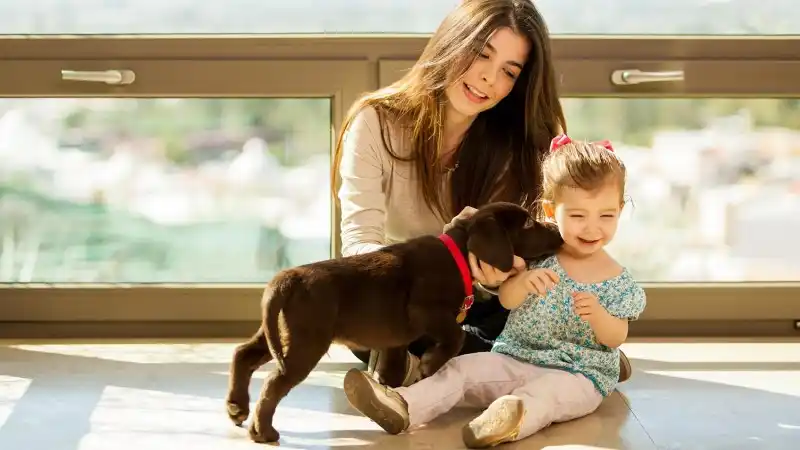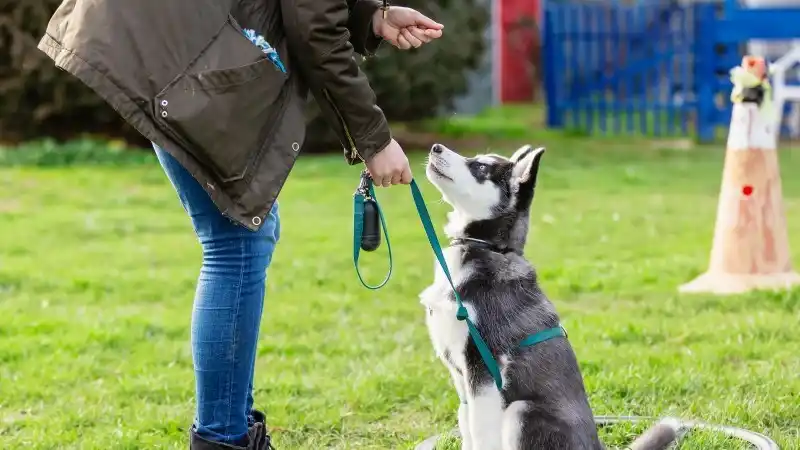Dog Body Language: Calming Signals
Dog body language includes calming signals displayed when stressed. Your dog may show these signs due to anxiety, fear, excitement, or other stress.
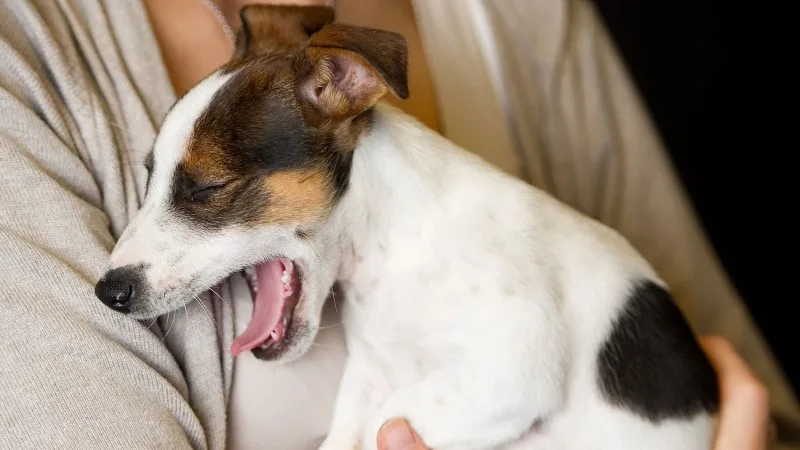
“I am a dog. All I have are gestures,” stated the dog Enzo during his narration of Garth Stein’s best-selling book The Art of Racing in the Rain. Enzo summarized it perfectly – your dog can only communicate with you via body language. Some body language cues are called calming signals, which dogs use to indicate that they want to diffuse stressful situations. Your dog may demonstrate these gestures to resolve conflict due to anxiety, fear, over-arousal (excitement), confusion, the desire to be accepted, or the request to have peace.
What Are Calming Signals?
“Calming signals can be seen in stressful situations and in exciting situations - good and bad stress affect your dog the same way. The top three calming signals owners should be on the lookout for are lip licking, yawning, and shaking off. If your dog was just eating, taking a nap, or swimming in the pond, respectively, these behaviors probably wouldn't count as calming signals; however, during everyday interactions, they can be big signs that your dog is being stressed in some way,” stated Meagan Thomas, professional dog trainer and owner of All Dogs Allowed in Cary, North Carolina. She continued, “If you notice a kid running up to your dog to hug him and your dog looks away and flicks out his tongue or lets out a big yawn, he's probably not interested in cuddling with that child. If you just got home from work, you might notice a pattern in which your dog runs to you, jumps in the air, shakes off, jumps again, shakes off again, runs around, shakes off again, and then calmly greets you, basically saying ‘Whew! I'm good! I've shaken off all that excitement and I'm ready to greet you calmly."
Stressed Dog Body Language
In addition to lip licking, yawning, and shaking, other signals may include nose licking, tongue flicking, looking away, turning the whole body away, showing whale eye (whites of the eyes), play bowing, sniffing the ground, lifting a single paw, walking slowly, freezing (being still), walking in curves and arcs instead of straight-on for a greeting, lowering their body toward the ground, sneezing, tail wagging, and submissive peeing. International dog trainer Turid Rugass states there are at least 30 calming signals and shares her findings in her book, On Talking Terms with Dogs: Calming Signals, and video, Calming Signals: What Your Dog Tells You.
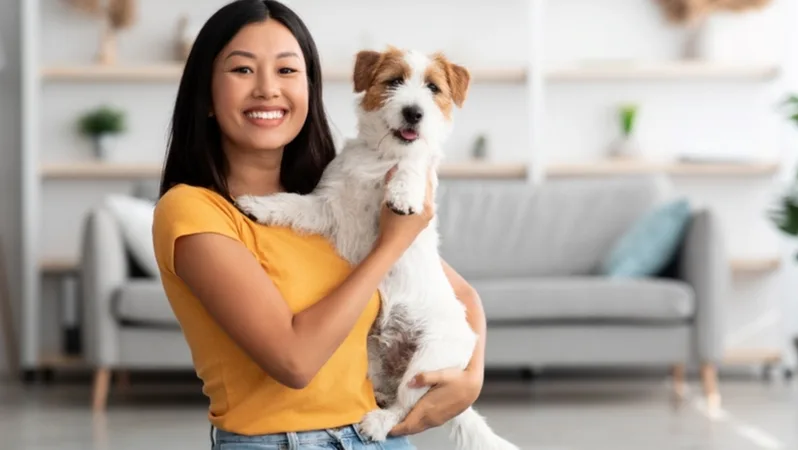
Every Dog and Cat Deserves the Pet Insurance of Champions
Get prize-winning care for your pets.
Communicating with Your Dog
Observe the gestures your dog offers when they meet other dogs and humans – are they telling you that they're uncomfortable in some way? After you start noticing the calming signals that your dog uses frequently, you can help your dog by making the situation easier or removing them from the setting.
If you can help your dog become more comfortable by “listening” to their calming signals, you can sometimes avoid your dog having to use intensified body language – such as barking and lunging - to show their escalated discomfort and fear. You can also use some of those same body language cues to communicate with your dog. See below for some scenarios in which you can apply your knowledge of your dog’s calming signals:
If your dog is nervous with three humans approaching all at once to pet them, ask the humans to only approach one at a time to make the situation easier for your dog. Six hands extending toward a dog is more overwhelming than one or two hands reaching for the chest for a polite petting and greeting session.
If your dog is offering calming signals to another dog and the other dog is not offering them back or offers rude body language, tell the other owner that your dogs can’t meet and leave the situation. You could state, “Let’s skip the greeting - my dog is telling me they're uncomfortable. Have a nice walk!” You could also ask the other owner to do parallel walking to acclimate the dogs slowly to a meeting.
If your dog scratches and yawns when you take them to the veterinary office, you could use calming signals – such as yawning back at your dog - to communicate back with them that things are okay.
If your dog tongue flicks when you and another human have a heated discussion, your dog is telling you that they notice that you and the other human are not content, and they would like everyone to get along. You can adjust your voice and tone to a normal level to reduce the stress for your dog or even offer a tongue flick at your dog. However, sticking your tongue out at the other human – instead of a flick for your dog’s sake - may not be helpful to resolve the human-human conflict! That’s a different type of body language!
Be your dog’s advocate by interpreting and heeding their calming signals. If needed, retreat with your dog or take other actions to ease tension. Realize that sometimes your dog uses calming signals to indicate that they want to be friends and have a polite encounter.
Take some of the stress out of pet ownership with Accident & Illness Coverage from AKC Pet Insurance (underwritten by Independence American Insurance Company). Our pet insurance plans are designed to be there when you need them, allowing you to focus more on the health of your pet and less on costly veterinary bills.

Every Dog and Cat Deserves the Pet Insurance of Champions
Get prize-winning care for your pets.
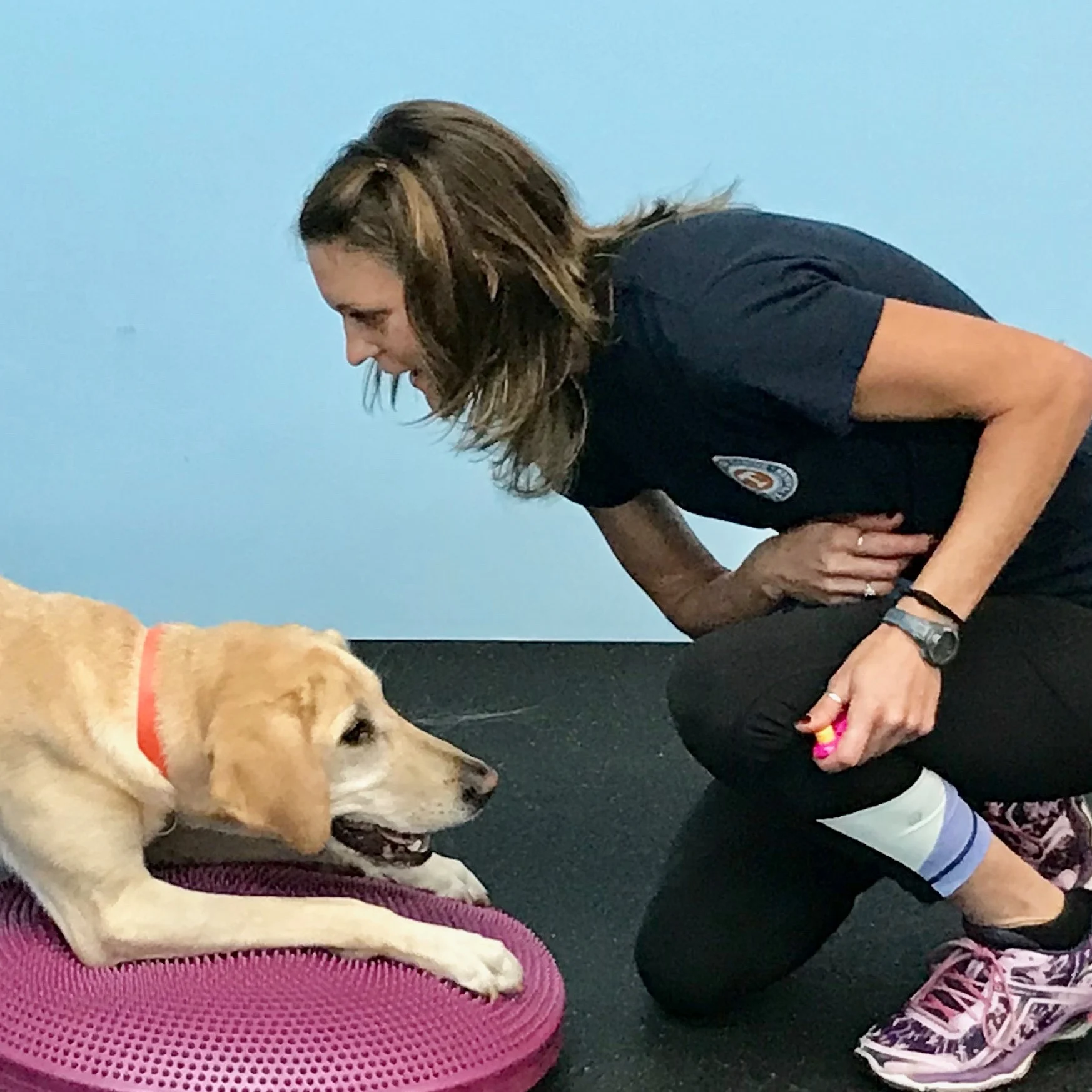
Jasey Day holds the Certified Canine Fitness Trainer (CCFT) credential through the University of Tennessee. She is a member of the Bobbie Lyons K9FITteam - a team of compassionate canine fitness instructors who actively teach others and continually expand their own knowledge. Since 2004, Jasey has taught a variety of workshops and classes on the following: Puppy, Canine Good Citizen/Family Pet, Advanced Family Pet, Canine Fitness, Canine Swimming, Rally, and Agility. In addition, Jasey has earned over 60 titles in Dock Diving, Agility, Rally, CGC and Trick Dog. Jasey has worked full time for the American Kennel Club since 2007 and teaches at Care First Animal Hospital in Raleigh, NC. Jasey’s Labrador Retrievers spend their free time hiking, training, and snuggling with Jasey.
READ MORE ARTICLES
